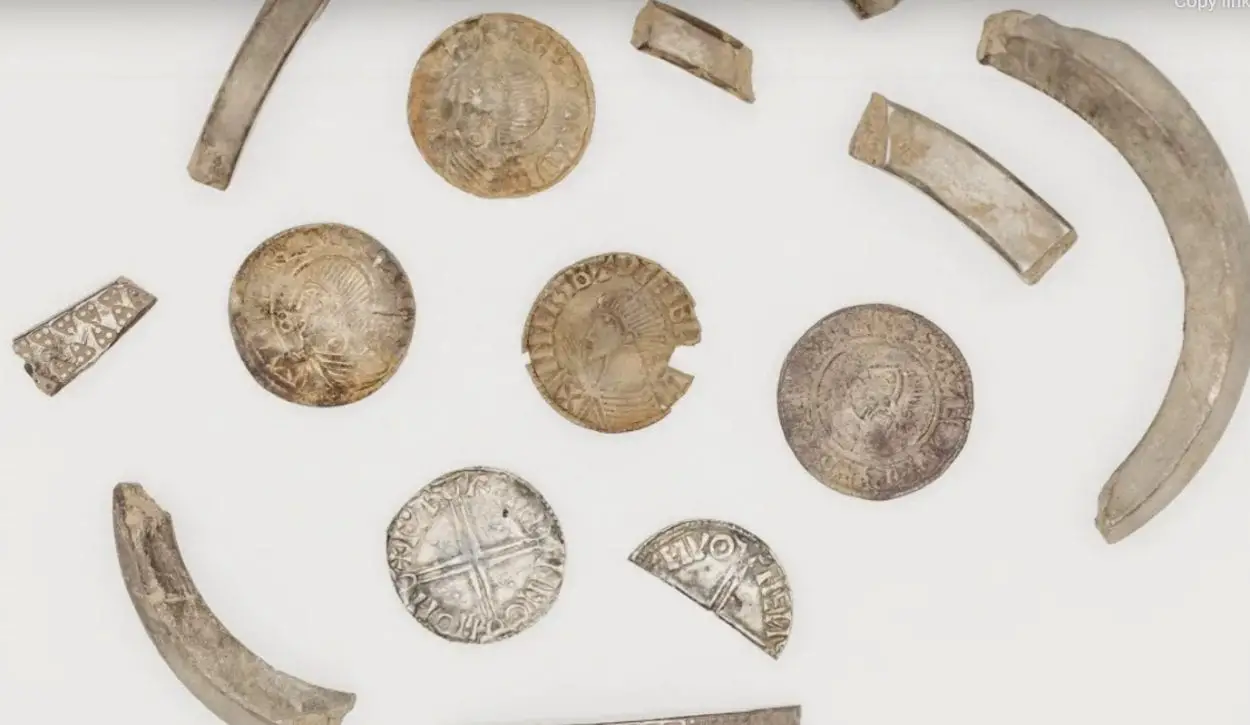Detectorist discovers Viking hoard on the Isle of Man, the third major treasure discovery on the island in less than six months.
The discovery was made by detectorist Kath Giles and consists of 87 coins, 13 pieces of cut, silver arm-rings, and associated objects.
A study of the hoard by independent researcher, Dr Kristin Bornholdt-Collins, has identified that the hoard includes coins minted in Ireland, England, Germany, and the Isle of Man, and is a direct reflection of what was circulating in and around Man in the late AD 1020s/c. 1030.
Researchers suggest that the hoard represents the personal wealth of the individual that buried it, and was probably built up over a period of a few years during the later era of Viking Age precious metal hoard deposition.
Many of the coins depict the image of an early medieval ruler, such as King Sihtric Silkbeard (King of Dublin AD 989-1036), King Cnut (King of Denmark – AD 1018–1035, King of England – AD 1016–1035, and King of Norway – AD 1028–1035), King Aethelred II (King of England – AD 978 – 1013, and AD 1014 –1016), and Otto II (Holy Roman Emperor – AD 973 – 983).
Allison Fox, Curator for Archaeology at Manx National Heritage said: “This is a wonderful find which helps further our understanding of the surprisingly complex Viking Age economy in the Isle of Man and around the Irish Sea area.

Dr Bornholdt Collins said: Like the similarly dated, but much larger, Glenfaba deposit, found in 2003, the new hoard might be compared to a wallet containing all kinds of credit cards, notes and coins, perhaps of different nationalities, such as when you prepare to travel overseas, and shows the variety of currencies available to an Irish Sea trader or inhabitant of Man in this period. The two hoards together provide a rare chance to study the contents side by side, right down to the detail of the dies used to strike the coins. Having this much closely dated comparative material from separate finds is highly unusual and essentially “doubles” the value of each find.
Header Image Credit : Manx National Heritage





